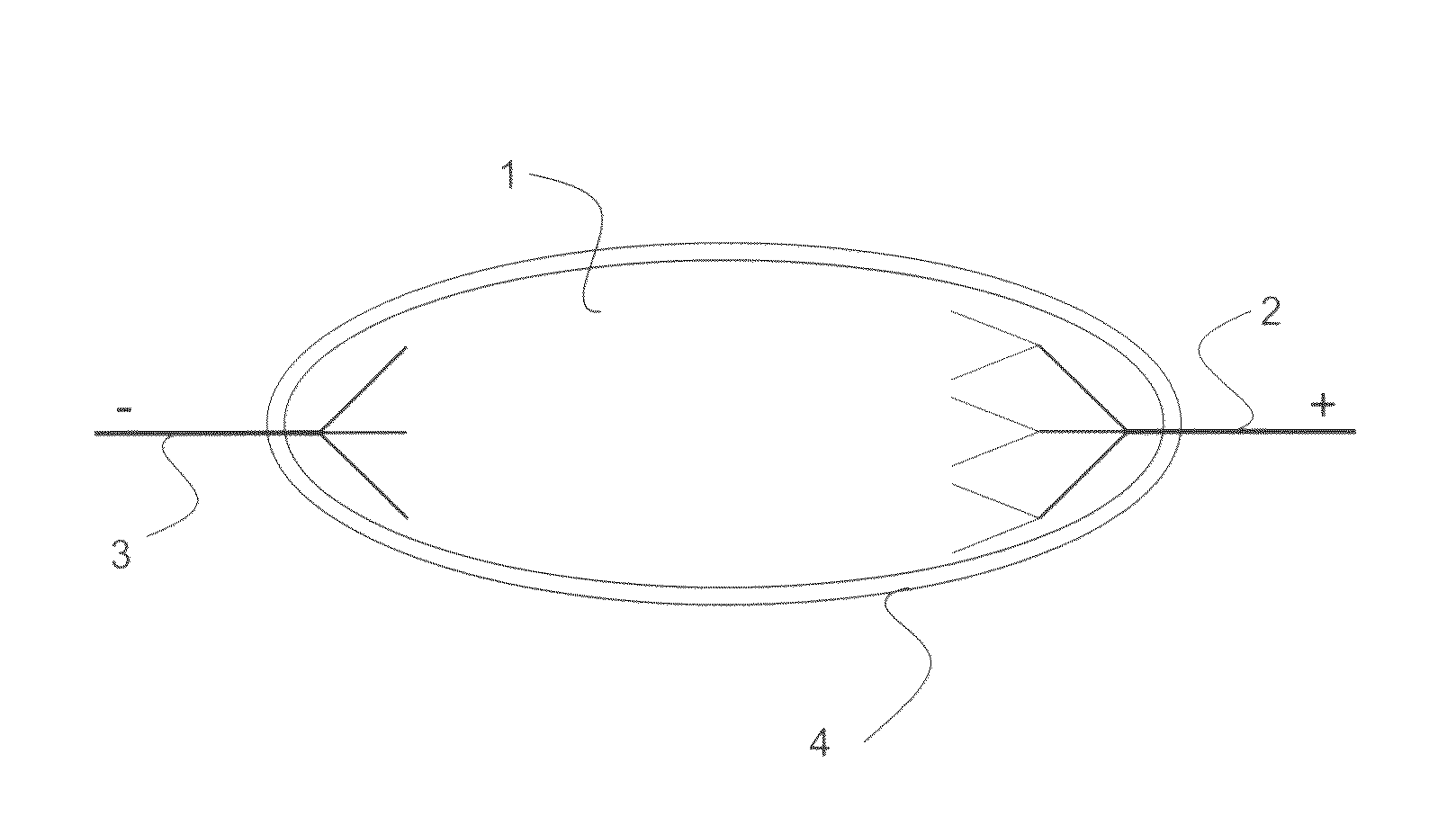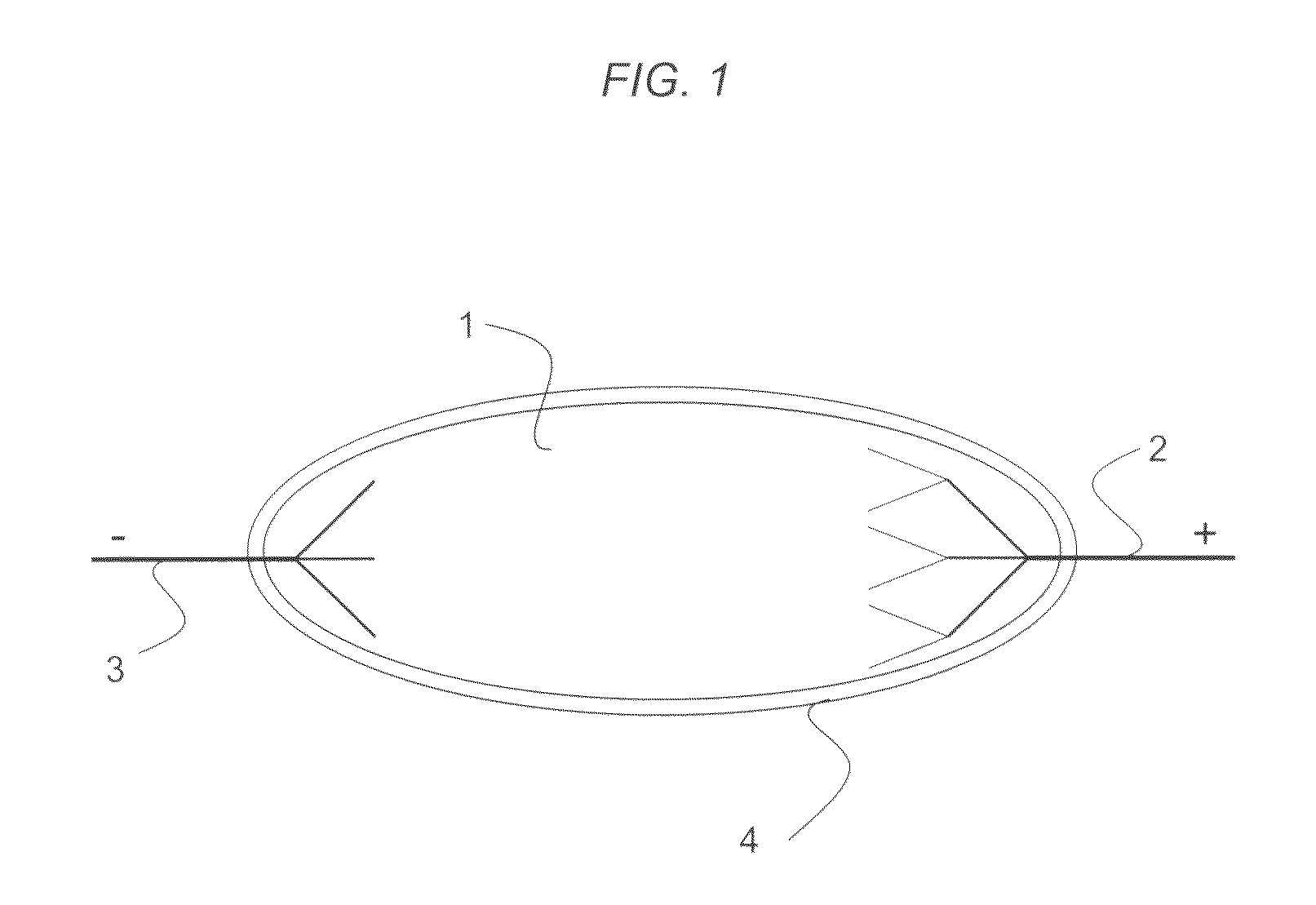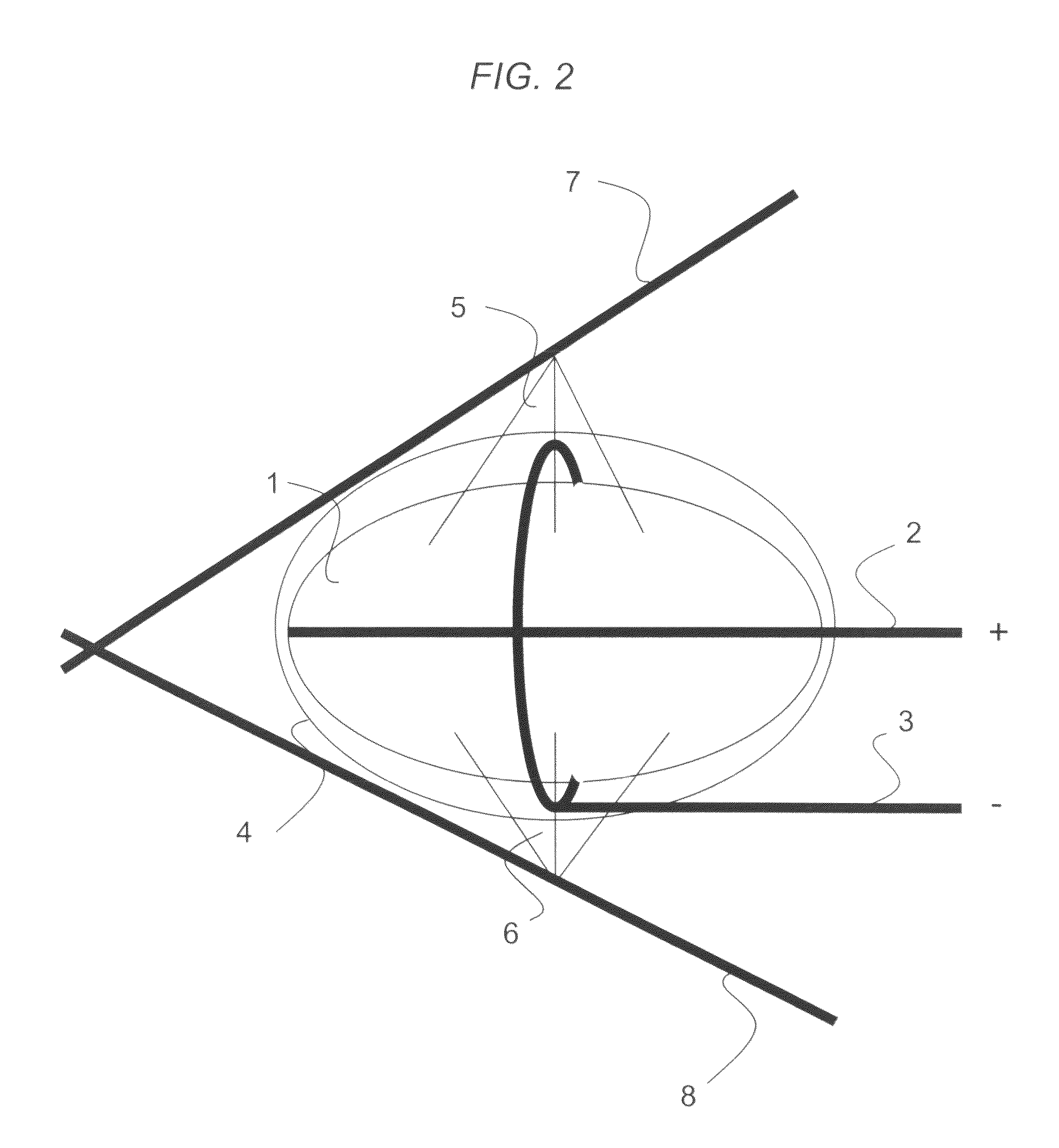Electroactive materials and electroactive actuators that act as artificial muscle, tendon, and skin
a technology of electroactive actuators and electroactive materials, applied in the direction of electrical equipment, coatings, plasma techniques, etc., can solve the problems of hardness, brittleness, inflexibility, and thus unresponsive electrically, and achieve the effects of improving the metal-polymer interface, good durability, and high strength
- Summary
- Abstract
- Description
- Claims
- Application Information
AI Technical Summary
Benefits of technology
Problems solved by technology
Method used
Image
Examples
example 1
[0033]Tests are conducted by placing the preferred ingredients of the composition for the electroactive material into vials of sufficient volume to accommodate the size of the of the electroactive polymer desired, then the vial is shaken by hand, although stir bars or other mechanisms may be used. The vial sizes are from 10 mm to 15 mm in diameter. Tubing of 5 mm in diameter or less is also used when strands for tendon-like material is wanted. Polymerization is conducted using ultraviolet (UV) induced photo-initiation and can also use thermal free radical initiation.
example 2
[0034]For example, in a vial, methacrylic acid (linear functionality equals 2), poly(ethylene glycol) dimethacrylate (cross-linking agent, functionality equals 3), UV initiator such as 1-hydroxycyclohexyl phenyl ketone or thermal free radical initiator such as 2,2-azobisisobutyronitrile or benzoyl peroxide, and water or glycerol as the solvent. The vial is purged with inert gas to remove oxygen. Then the vial is typically stirred by swirling by hand, and polymerizing to gelation using UV for photo-polymerizations or using heat for free radical polymerizations.
[0035]The preferred composition for the electroactive material, 1, is methacrylic acid, or other suitable ion-containing monomers, with or without 2-hydroxyethyl methacrylate or other non-ionic monomers, cross-linked with poly(ethylene glycol) dimethacrylate, or other suitable cross-linking agents, such as ethylene glycol dimethacrylate, 1,1,1-trimethylolpropane trimethacrylate, or a combination of cross-linking agents, prefera...
PUM
| Property | Measurement | Unit |
|---|---|---|
| voltage | aaaaa | aaaaa |
| diameter | aaaaa | aaaaa |
| diameter | aaaaa | aaaaa |
Abstract
Description
Claims
Application Information
 Login to View More
Login to View More - R&D
- Intellectual Property
- Life Sciences
- Materials
- Tech Scout
- Unparalleled Data Quality
- Higher Quality Content
- 60% Fewer Hallucinations
Browse by: Latest US Patents, China's latest patents, Technical Efficacy Thesaurus, Application Domain, Technology Topic, Popular Technical Reports.
© 2025 PatSnap. All rights reserved.Legal|Privacy policy|Modern Slavery Act Transparency Statement|Sitemap|About US| Contact US: help@patsnap.com



